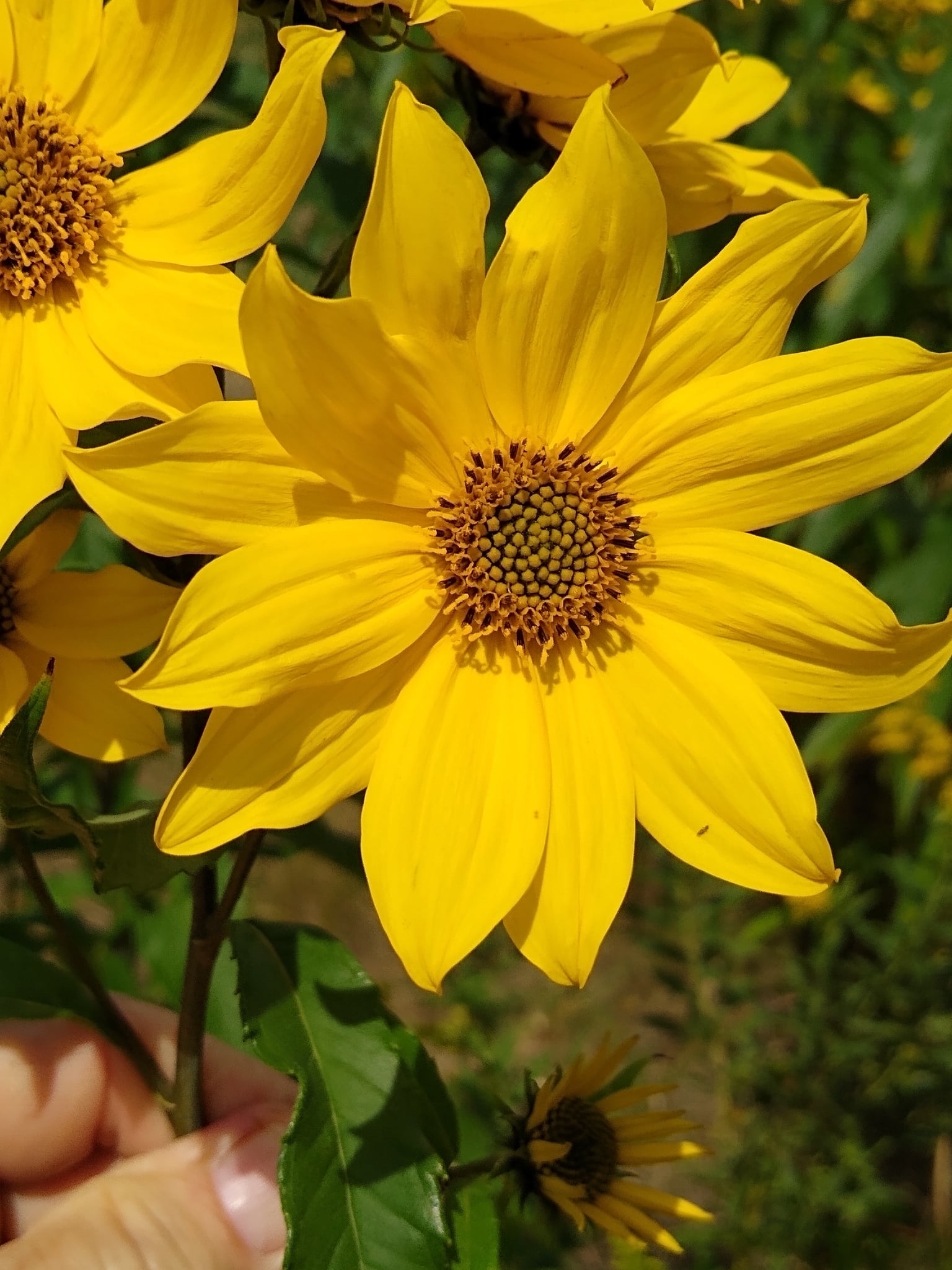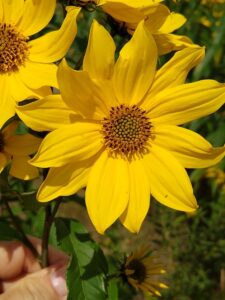Maryland Native Plants
Helianthus giganteus – Giant Sunflower
Helianthus giganteus, also called giant sunflower can grow between 3-9′ tall. It forms a central stem that is unbranched, except along the upper one-third of its length, where there may be a few ascending lateral stems. These stems are predominately reddish purple and terete; they are covered with spreading white hairs. Individual leaves are 3-7″ long and ½-1½” across. The upper leaf surface is medium green and rough-textured from minute stiff hairs, while the lower surface is pale green with spreading white hairs along the major veins and minute stiff hairs in between.
The nectar and pollen of the flowerheads attract a variety of pollinators such as bumblebees, little carpenter bees, leaf-cutting bees, green metallic bees, Andrenid bees, Syrphid flies, butterflies, and beetles. The bees suck nectar and/or collect pollen, flies and beetles suck nectar and/or feed on pollen, while butterflies suck nectar only. Additionally, other insects feed on the foliage, stalks, roots. Birds during the fall and winter also eat the seed heads. Bird species include the Mourning Dove, Eastern Goldfinch, Black-Capped Chickadee, White-Breasted Nuthatch, Tufted Titmouse, and various sparrows. Because Giant Sunflower occurs in wetlands, its large stalks are sometimes used by beavers in the construction of their dams and lodges. This tall colonial plant also provides protective cover for many kinds of wildlife.
Common Name: Giant Sunflower
Germination: Cold stratify for at least 30 days.
(Information from Illinois Wildflowers.)
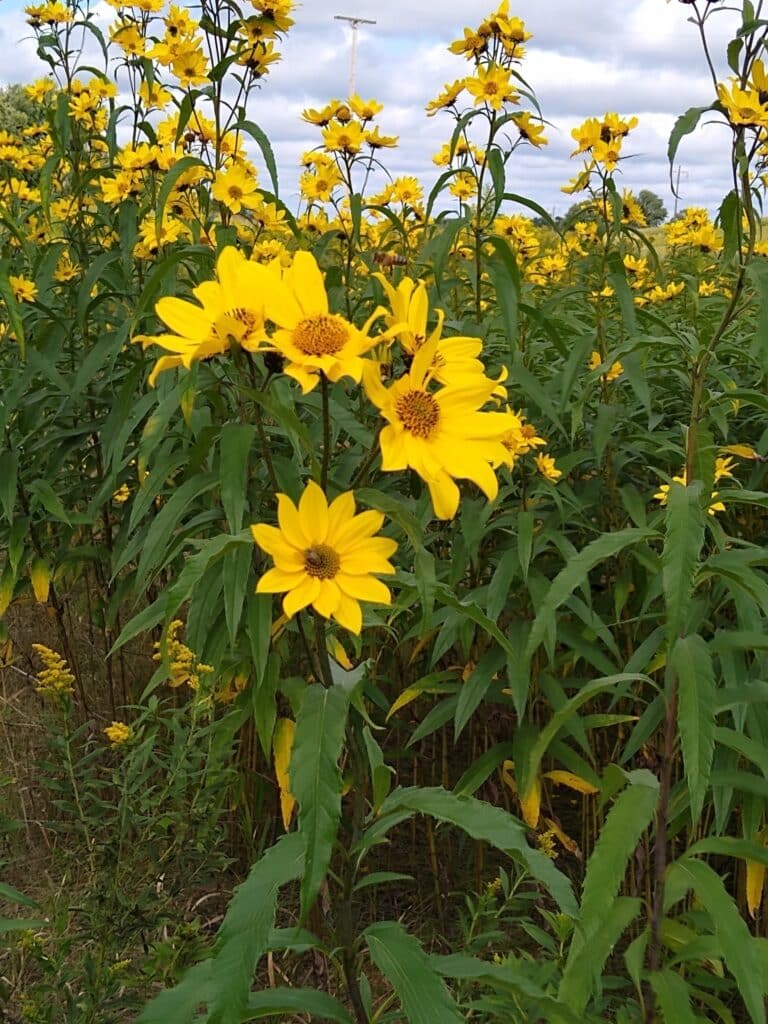
Giant Sunflower en mass
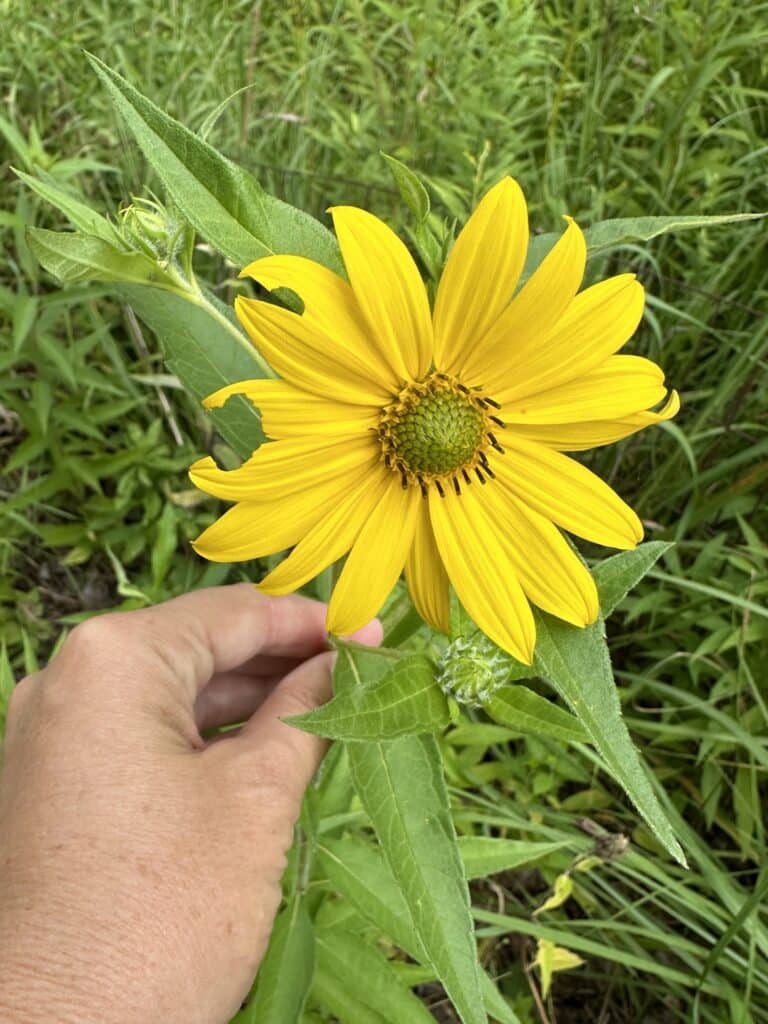
giant sunflower bloom
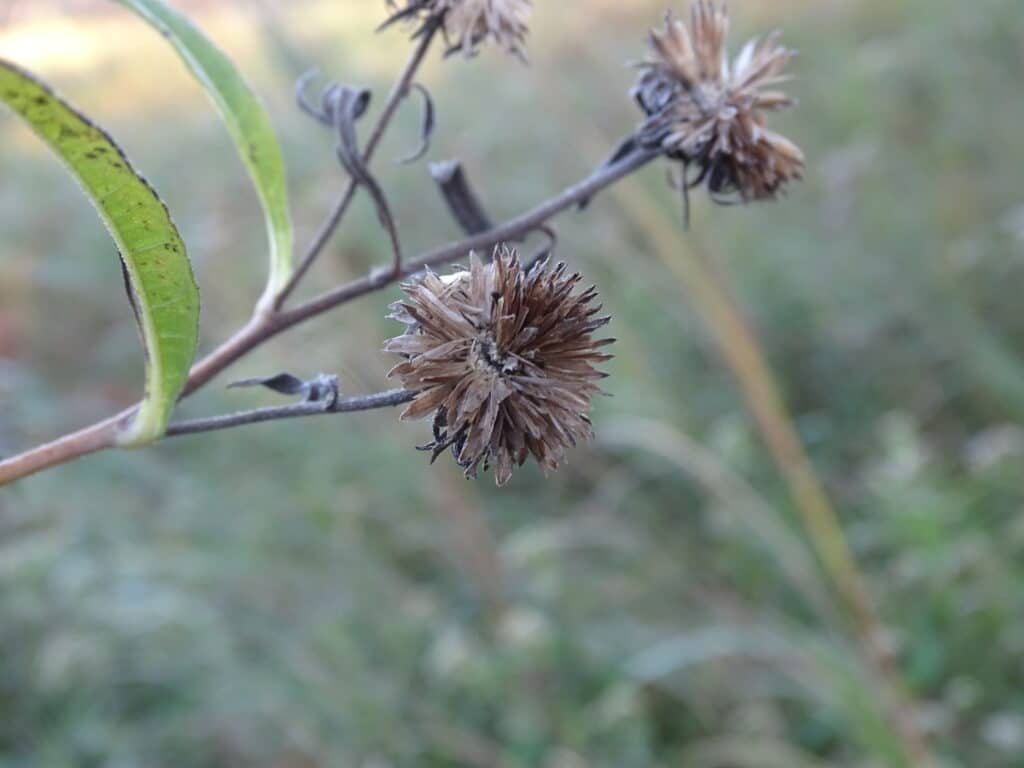
Giant Sunflower Seed Head

